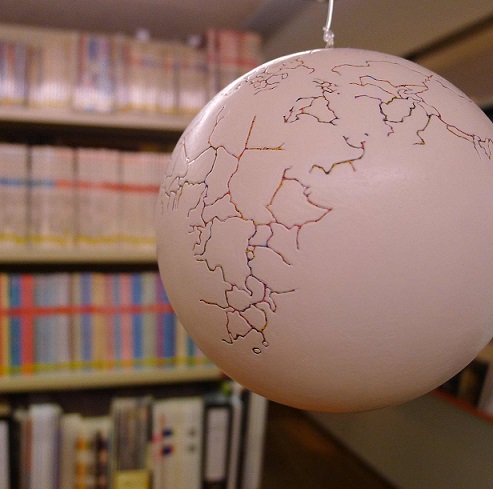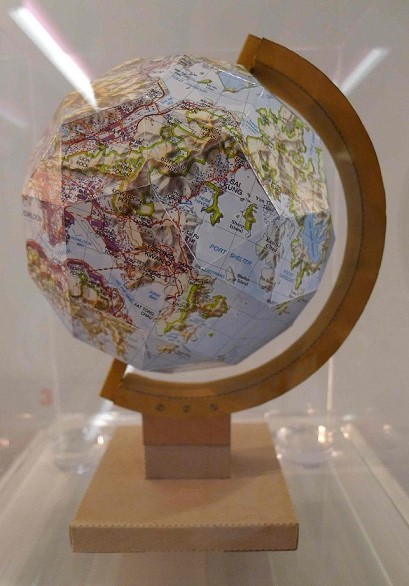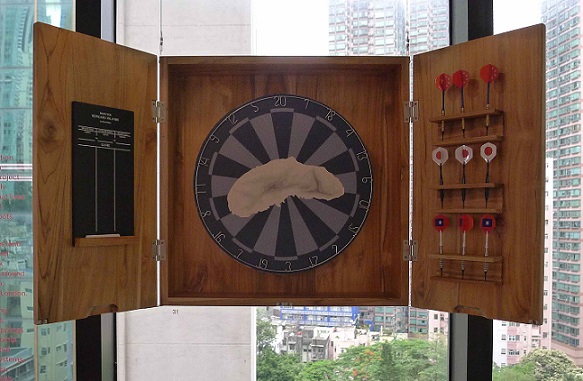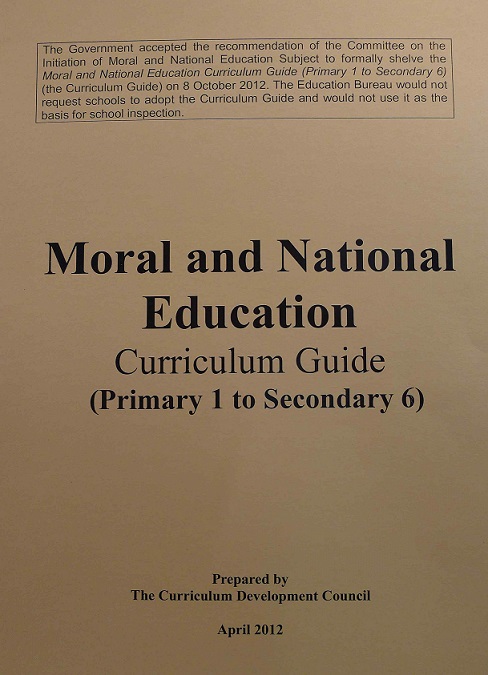Reviews & Articles
Asia Art Archive: Mapping Asia
John BATTEN
at 10:17pm on 15th June 2014





Captions:
1. Ho Tzu Nyen, Sketches and Notes from The Critical Dictionary for Southeast Asia, 2013, 42x59.4cm, poster - which can be taken by visitors, in situ with street view below AAA Library windows. [Exhibition notes: Ho Tzu Nyen's notes and sketches ask a simple question: what constitutes the unity of the region?]
2. Tom Molloy, Borderline, 2007, enamel paint on mass-produced globe, 12cm, edition of 10. (Courtesy of Rubicon Gallery, Dublin).
3. Kwan Sheung Chi, Hong Kong, 2012, off-set print and cardboard, 18x14x14cm.
4. MAP Office, Disputed (Diaoyu dao, Uotsuri-shima, Diaoyu-tai), 2004. Dartboard, wood & mixed media, 60x60x15cm, edition of 3. [Exhibition notes: this work responds to numerous recent escalations in island disputes around the world].
5. Moral and National Education, printout from Hong Kong Education Bureau website, 2014. [Exhibition notes: Thousands protested in Hong Kong in July 2012 against the introduction of a mandatory new school subject to teach students about China's history and culture. Following these protests the subject was announced by the HKSAR Government to no longer be compulsory].
All photos by John Batten.
(原文以英文發表,評論亞洲藝術文獻庫之「拼湊亞洲」展。)
European exploration and cartographic enquiry in the sixteenth century led to the first recorded notation of ‘Asia’ as a large landform. By the eighteenth century this broad-brush, homogenous label also covered the area’s geopolitics and varied cultures. The later consequences of Asia’s colonial subdivision, nationalism in reaction to subjugation and Japanese promotion of ‘Pan-Asianism’ - but contradicted by its own imperialist ambitions - continues to influence today. The redrawing of Asia’s post-war political boundaries, war, repression and conflict, socialist and democratic ambitions, and economic expansion have forced a more nuanced reading of Asia.
The stimulus for this exhibition is the question most frequently asked by visitors of the Asia Art Archive: how does it define ‘Asia’? How is contemporary Philippine art, Pakistani art, or art from Iran considered by an archive located in Hong Kong, China?
The question itself structures the exhibition’s tentative exploration of answers. This display is an all-embracing, holistic discussion about Asia supported by writing in a considered catalogue, documentation and videos. It maps links between culture, politics and physical landscape alongside examples of modernist and contemporary art.
The viewer is offered impressions of Asia to stimulate further research – which is easily done within the Archive itself. An example is British artist Tom Molloy’s Borderline, a small globe of the world hanging amidst the Archive’s bookracks (see image). The world’s entire geography is blanked out on the globe except for the artificial territorial borders between countries. These strong lines appear like the supposed sighting of China’s Great Wall from outer space, man-made barriers of politics, culture and defence.
A tension running through and teased out in the exhibition is the challenge to retain a cultural identity within the ambit of 'Asia'. The Bengali poet and Asia’s first Nobel Prize recipient Rabindranath Tagore exhorted that modernism was “freedom of mind, not slavery of taste” and “independence of thought and action, not tutelage under European schoolmasters.” In otherwords, a person's cultural and regional identity (in Tagore's case, Bengali), despite new ideas as espoused by modernism (and not forgetting other extreme pressures, such as colonialism and an emerging composite 'pan-Indian' cultural identity), can be retained and strengthened. A century later, Rasheed Araeen’s writing (as editor, in the influential magazine 'Third Text') consistently argues that a Eurocentric bias towards art and cultural history can be overcome by the power of art itself, because it “is concerned with making things” and relates directly to people’s daily lives.
This should be kept in mind when globalisation’s advance has its inevitable stumble.
Exhibition:
'Mapping Asia' @ Asia Art Archive
12 May 2014 to 29 August 2014 at Asia Art Archive Library
A version of this review was published in the South China Morning Post on 17 June 2014.
